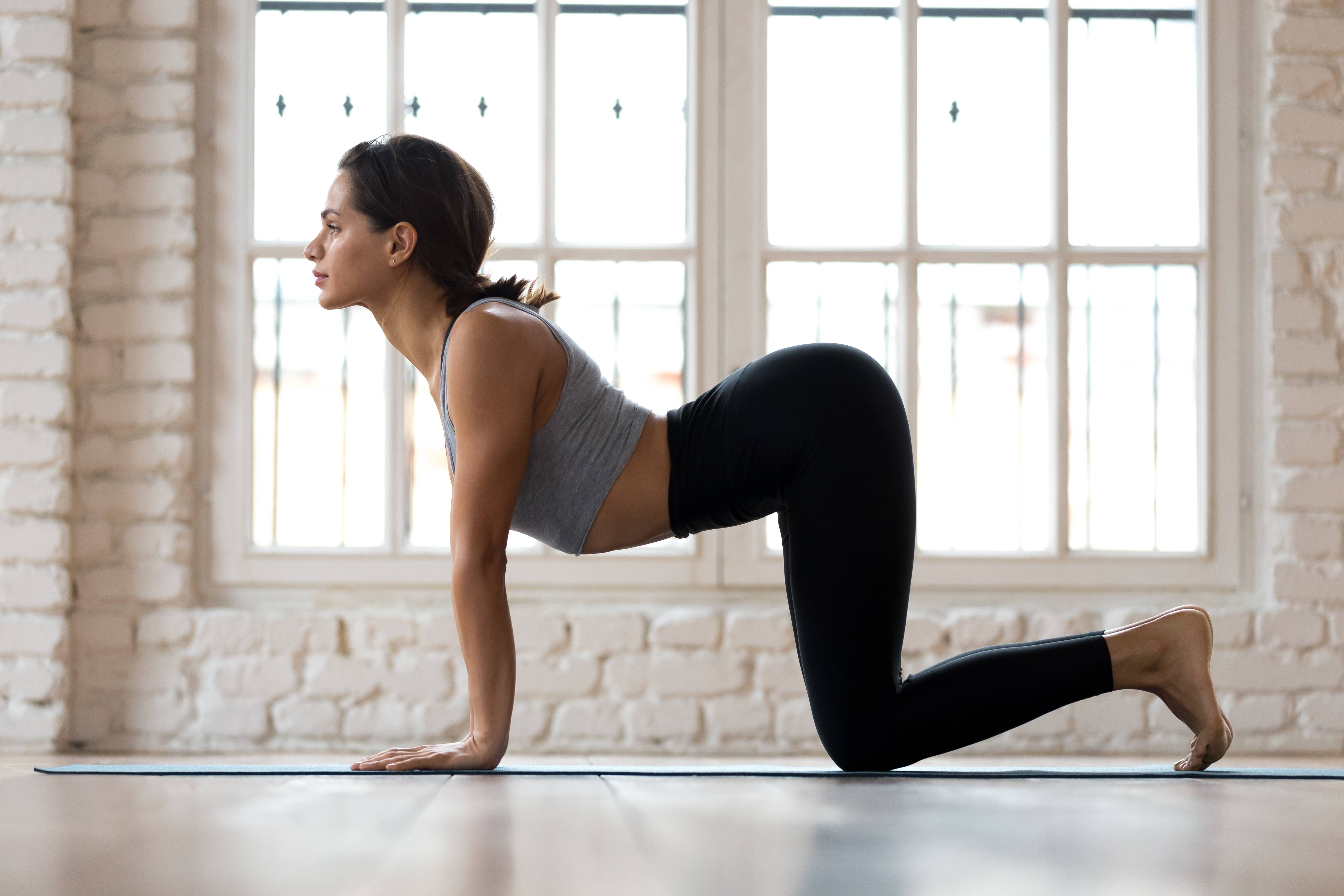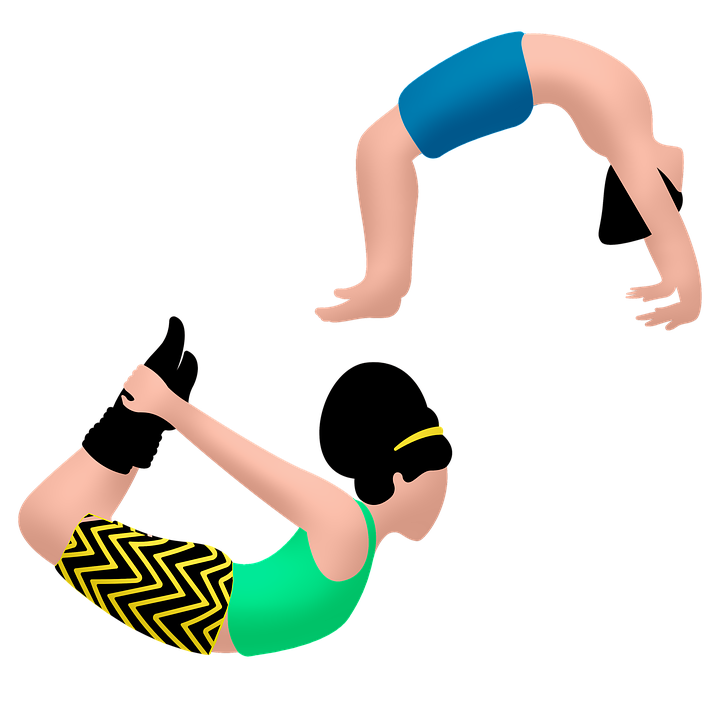
Practicing yoga poses for bone strength can be beneficial for your bone density. People with osteoporosis and osteopenia should be aware that many poses can put stress on their bones and connective tissue. Those with bone health problems should stick to poses that promote balance and strength while encouraging a tall posture. Here are the top yoga poses that will help you build bone strength. These poses will build bone strength and help prevent injury.
Pose that encourages the arms to support weight
Balance poses can be great for increasing bone density if they are done near a wall. However, people suffering from osteoporosis should not practice these poses as the cervical curve can be compressed and lost. This could cause bone loss. Mild inversions, however, can be beneficial to the body's energetic and circulatory health. Below are some poses that will encourage your hands to support weight and increase bone density. You can also practice them on a chair or wall.
Pose that strengthens the spine
A yoga pose that strengthens the spine for bone density is a great way to protect the hips and prevent osteoporosis. This pose is particularly beneficial for women as smaller women are more likely to develop osteoporosis. Rubenstein's pose is a good option for women who have osteoporosis in their family.

Pose that improves the balance
One pose is called Seated Twist and requires a person to sit cross-legged. Inversions can put pressure on the spine which increases the chance of fracture. Seated Twist is not recommended for osteoporosis sufferers. Instead, they should be lying flat on their stomachs with their legs extended and their legs straight up. This is a form balancing.
Pose that increases flexibility
Yoga poses, including the tree pose, are good for bone strength and stability. However those with osteoporosis ought to be careful. These poses can cause vertebrae to fractures as low-density vertebrae cannot resist compression. You can modify your poses to increase stability and safety. For example, navasana is sitting on a wall. You should also talk to a yoga instructor about your condition, and he or she can modify certain yoga poses to avoid risking injuries or deteriorating health.
Avoid straining the bones with a position that puts stress on the spine.
Strong yoga students can try a standing forward roll, but this could pose danger to osteoporosis sufferers. To maintain their best spinal shape, students should be seated or upright. This is true even for forward folds, however it is important to avoid stretching and overstretching in order to maintain bone density. People suffering from osteoporosis such as those with a lower back injury should avoid forward folding.

FAQ
Do I need to exercise every day?
No! You should do at least 30 mins of moderate-intensity activity 5 days per week. That means walking fast enough to be slightly out of breath or biking hard enough to sweat.
Which dietary supplement is good for weight loss?
Losing weight requires both diet and exercise. However, some people find that certain supplements help them along the way.
A few studies have suggested that omega-3 Fatty Acids might help weight loss. Omega-3 fatty acid is an essential fat that is important for brain function as well as cell membrane integrity. They're found in seafood like salmon, tuna, shrimp, and cod liver oil.
Another study suggests that green-tea might help with weight loss. Green tea contains catechins, antioxidants that may help boost metabolic rate and encourage weight loss.
Is it possible to drink alcohol while training?
Yes. Alcohol can increase energy expenditure, speed recovery time, and reduce soreness.
Also, alcohol increases insulin sensitivity which makes it easier to absorb glucose.
Dehydration can result from alcohol, which can affect your metabolism. It also reduces testosterone production, which may decrease muscle-building potential.
It is important that women refrain from drinking alcohol before they exercise. Women who drink heavily should wait at LEAST 24 hours before they start working out.
The best thing for women who are pregnant is to avoid alcohol.
Men should limit their alcohol intake to just one drink each day.
Statistics
- By John Thompson Take a whopping 38% off a set of PowerBlock Pros. (menshealth.com)
- Get free shipping and 25% off today. (healthline.com)
- 10 pounds in a month is likely during a lean bulking phase, especially for beginners. (muscleandstrength.com)
- Cardmembers earn 5% Back at Amazon.com with a Prime Credit Card. (amazon.com)
- An estimated calorie range for moderately active adult males falls between 2,200 to 2,800 calories per day, depending on age. (eatright.org)
External Links
How To
How do I lose weight while working out?
Exercise burns calories through increased metabolism and oxygen consumption.
Exercise at a moderate intensity to safely lose weight.
These are some tips to help you lose fat while working out:
-
Cardio exercises like walking, running (or jogging), swimming, cycling, running, and/or elliptical training are all good options.
-
Exercise for 30 minutes three times per week.
-
Strength training is a great way to lose weight.
-
Avoid intense workouts. It is possible to build muscle without destroying muscle tissue.
-
When exercising, make sure to drink lots of water. Water helps flush out toxins and keep your body properly hydrated.
-
After exercising, you should drink low-fat protein drinks. Protein shakes can help boost energy and repair muscles.
-
You can eat smaller meals throughout the day so that you don't feel hungry in between meals.
-
Don't skip breakfast! Skipping breakfast can leave you feeling tired and sluggish.
-
Mental health is important. Stressful situations can slow your metabolism.
-
Keep a positive attitude. Studies show that people who believe they are overweight gain more weight then those who think they are attractive.
-
Sleep enough. A lack of sleep makes it difficult to lose fat.
-
Active living is key. Be sure to get up and move around every hour or two.
-
Maintain a healthy diet. Eat right to feel satisfied and full for longer.
-
Find ways to relax. An anxious mind won't allow your body release stress hormones, which can lead to the destruction of muscle tissue.
A balanced diet contains all necessary nutrients for growth and development.
Instead of eating three large meals a day, eat six smaller meals every day. This allows your body to properly digest what you have eaten.
You need about 500 milligrams of calcium daily to maintain strong bones. Calcium can also be found in milk products, yogurt, fortified Soy beverages, orange Juice, cereals and bread.
Calcium is found in leafy vegetables, beans and tofu, as well nuts, seeds and cheese.
Vitamin D is required for calcium absorption. Vitamin D is found in eggs yolk, fatty fish and fortified foods.
Vitamin E is crucial for skin health. Vitamin E is found in vegetable oils and wheat germ oil, as well as peanuts, almonds and sunflower seeds.
Your body needs zinc for normal immunity function and wound healing. Zinc is found in oysters, legumes, meats, whole grains, and seafood.
Zinc deficiency could cause fatigue, nausea, vomiting, and depression.
Consuming too much sugar can cause insulin resistance. This causes an increase in blood glucose levels. Insulin resistance leads to weight gain.
When there is a high level of free radicals, insulin resistance can develop. Free radicals are molecules containing unpaired electrons which cause damage to cells membranes.
The main sources of free radicals are food additives.
Free radical damage may lead to cancer, heart disease diabetes, arthritis, asthma and other conditions.
To prevent free radical damage, eat a healthy diet rich in antioxidants. Antioxidants protect against oxidative damage.
Antioxidant vitamins include Vitamin C (found in citrus fruits), beta carotene (found in carrots, sweet potatoes, spinach, broccoli, cantaloupe, apricots, squash, mangoes, peaches, peppers, tomatoes, cabbage, cauliflower, kale, Brussels sprouts, collard greens, watermelon, and strawberries), and Vitamin E (found in nuts, olive oil, avocados, and eggs).
Additional antioxidant nutrients include selenium and copper, manganese and zinc.
Selenium helps to protect cells against free radicals and oxidative stress. Selenium is also found in Brazil nuts.
Copper protects your eyes, brain, eyes and red blood cell. Copper is found in shellfish, poultry, meat, and organ meats.
Manganese plays an important role in bone structure. Manganese is found as a component of bone structure in brown rice (spinach, bananas), prunes, raisins and oatmeal.
Zinc is important for healthy growth, reproduction, and wound-healing. Zn is present in lean cuts of meat and white fish, as well as eggs.